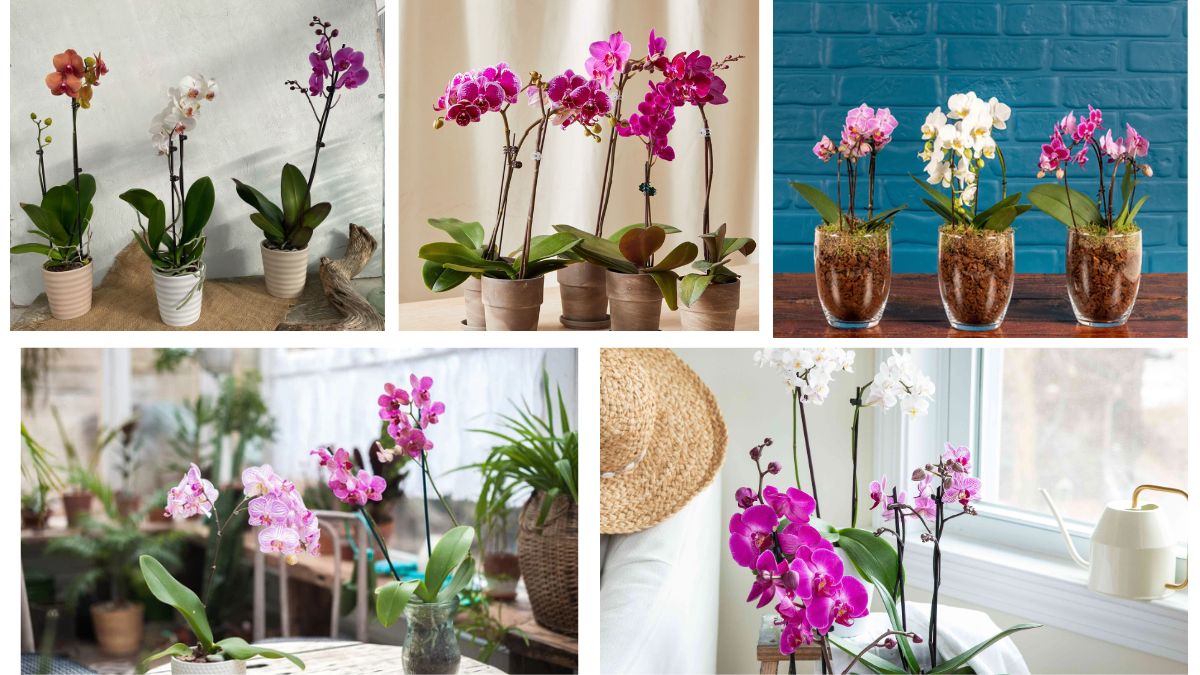Orchids are among the most elegant and captivating flowering plants in the world, known for their exotic beauty, long-lasting blooms, and variety of striking species. While they may seem delicate and high-maintenance to beginners, orchids are surprisingly hardy when cared for properly — with watering being one of the most important factors in their overall health.
A question that often puzzles both novice and seasoned orchid enthusiasts is: “How many times a week should you water orchids?” The answer depends on several factors, including the type of orchid, the environment, and how it’s planted. In this article, we’ll explore the ideal watering frequency for orchids, explain how to assess when your plant needs water, and share expert tips for keeping your orchids thriving.
Why Watering Orchids Is Different from Other Plants
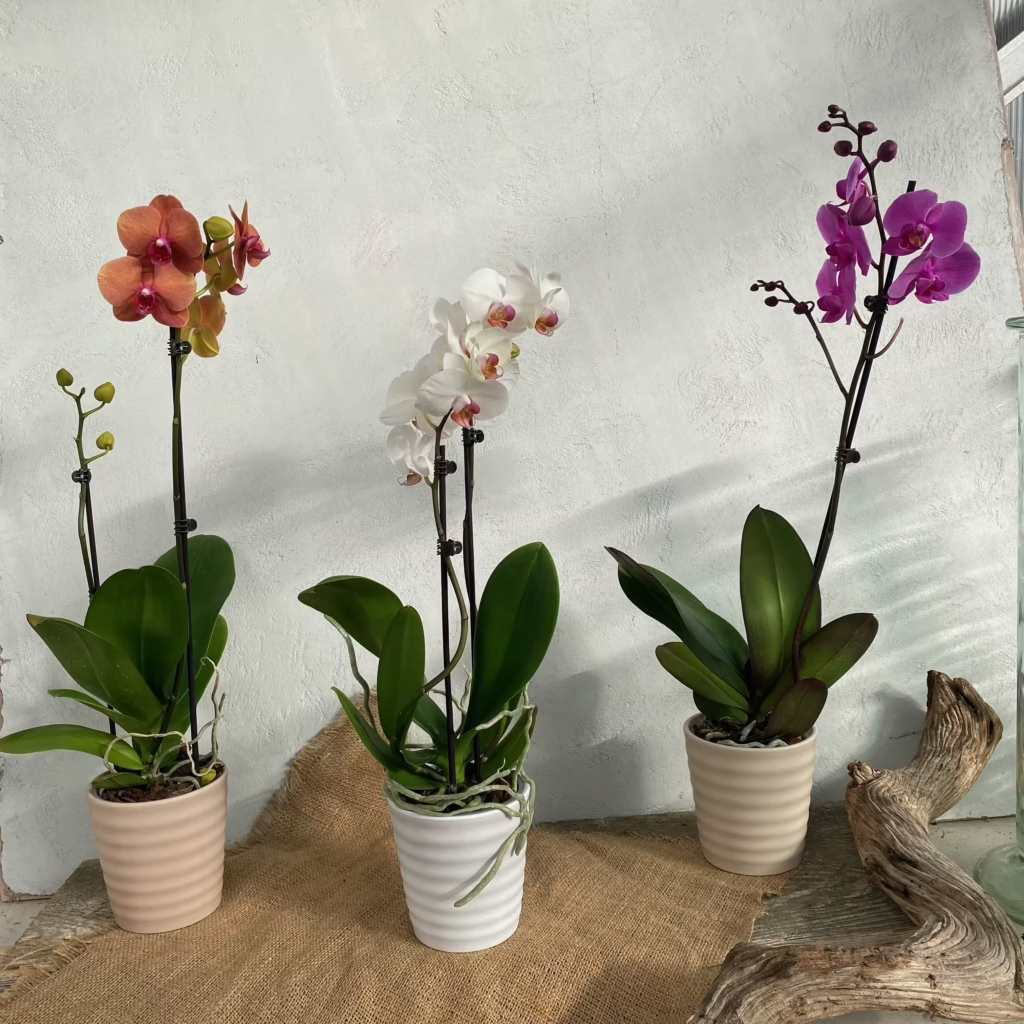
Unlike typical houseplants, most cultivated orchids are epiphytes, meaning they naturally grow on trees in tropical rainforests, where their roots are exposed to the air and absorb moisture from rain and humidity. This unique growing habit means orchids require aerated roots and controlled moisture — neither too wet nor too dry.
In cultivation, orchids are often grown in loose, fast-draining media like bark, moss, or a special orchid mix, which dries out faster than regular potting soil. As a result, watering orchids requires more attention to environmental conditions and the plant’s immediate needs.
How Many Times a Week Should You Water Orchids?
Most orchid species should be watered once a week. However, this can vary based on several factors:
- During active growth (spring and summer): Water once every 5–7 days.
- During cooler months or dormancy (fall and winter): Water once every 10–14 days.
Important: Orchids should not be watered on a strict calendar schedule. Instead, assess the moisture in the potting medium and adjust accordingly.
Factors That Affect Watering Frequency
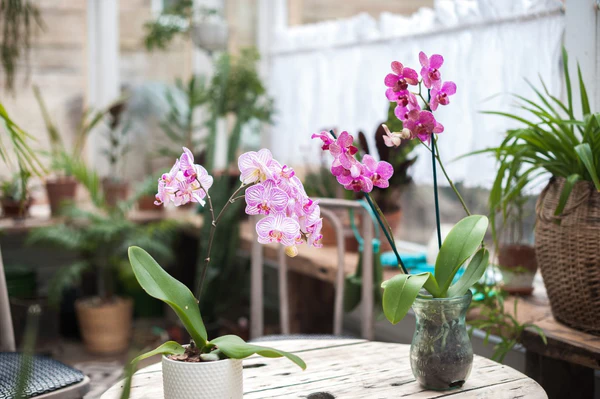
Several factors determine how often you should water your orchid:
1. Orchid Species
Different types of orchids have varying water needs:
- Phalaenopsis (Moth Orchid): Water once a week.
- Cattleya: Allow the medium to dry out between waterings; typically every 7–10 days.
- Dendrobium: Needs less frequent watering, about once every 10 days.
- Oncidium: Prefers slightly more moisture; water every 5–7 days.
2. Potting Medium
- Bark-based mixes: Dry out faster, requiring more frequent watering.
- Sphagnum moss: Retains moisture longer; water less frequently.
- Coconut husk chips and perlite: Intermediate moisture retention.
3. Environment
- Warm, dry, and bright rooms: Increase watering frequency.
- Cool, humid, or low-light areas: Reduce watering.
4. Pot Type
- Clay or terracotta pots: Absorb moisture, causing the medium to dry faster.
- Plastic or glazed ceramic pots: Retain moisture longer.
5. Plant Size and Root Health
- Orchids with larger, healthy root systems absorb more water and may require more frequent watering.
- Young plants or orchids with minimal roots need careful watering to avoid rot.
How to Tell When Your Orchid Needs Water
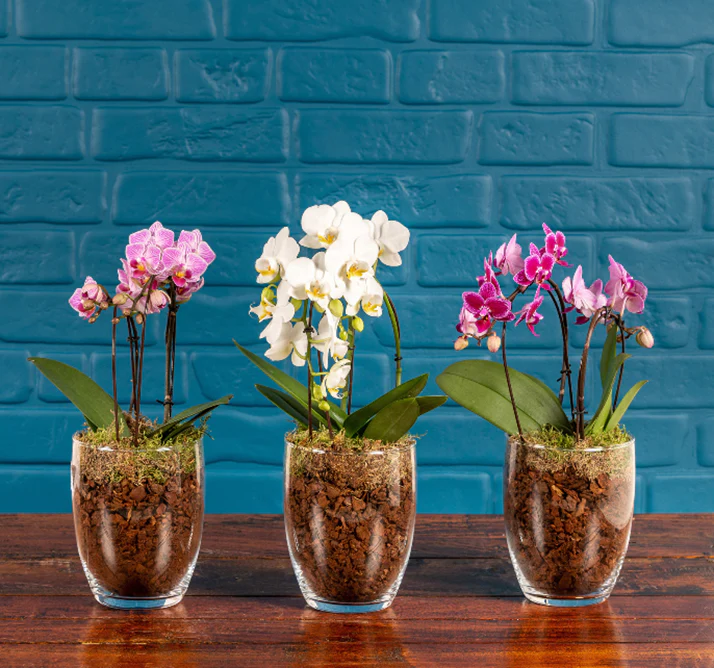
Rather than following a rigid schedule, learn to read your orchid’s signs and soil conditions.
Check the Potting Medium
- Insert a finger or wooden skewer into the medium.
- If it feels dry 1–2 inches below the surface, it’s time to water.
- If it’s still damp, wait a few more days.
Examine the Roots
- Healthy, hydrated roots: Plump and green.
- Dry roots: Silvery gray or white.
- Water when the roots turn silvery, and stop when they turn green.
Monitor the Leaves
- Firm, bright green leaves: Good hydration.
- Wrinkled or drooping leaves: Dehydration.
- Yellowing, limp leaves: Possible overwatering.
How to Water Orchids Properly
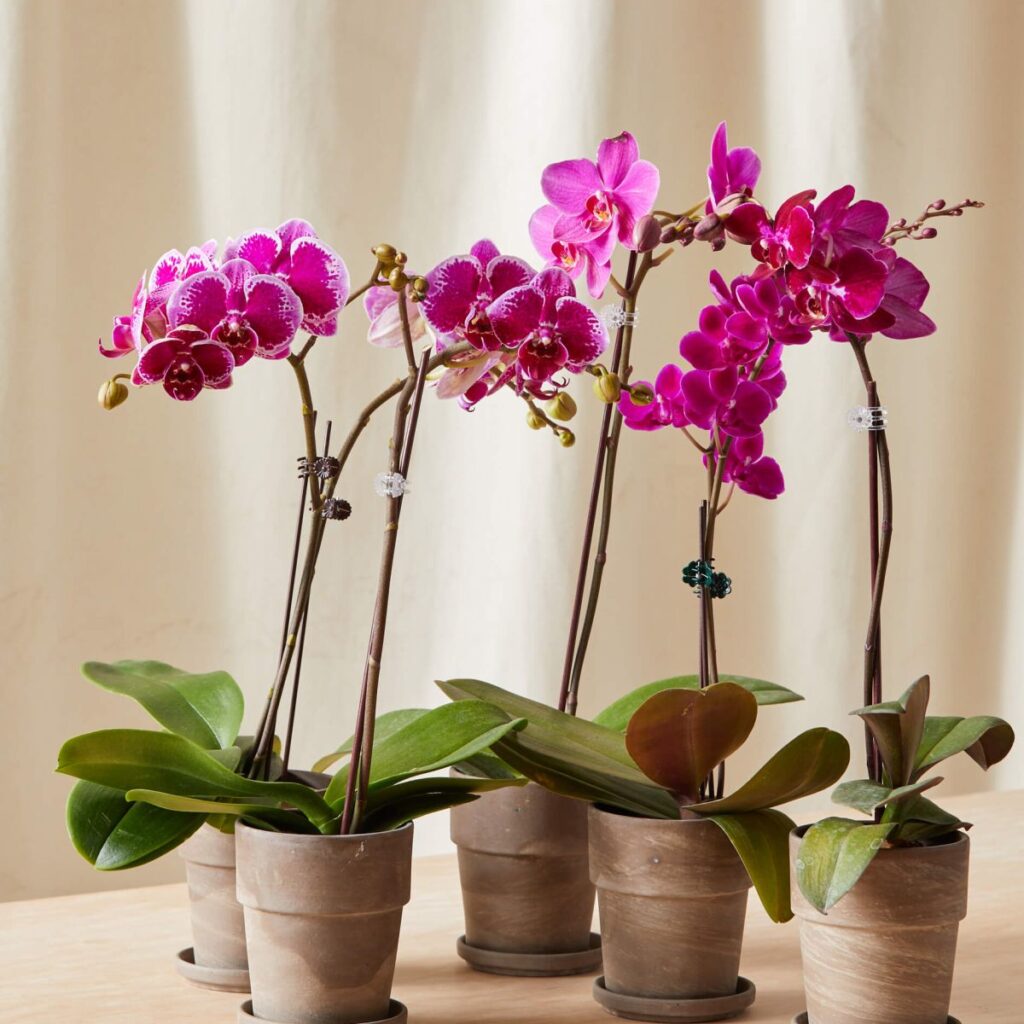
The method you use is as important as how often you water.
Best Watering Techniques
- Soaking Method: Remove the orchid’s pot and soak it in a bowl of room-temperature water for 10–15 minutes. Allow it to drain thoroughly before placing it back.
- Draining Method: Water the plant over the sink until water flows freely out of the drainage holes. Let it drain fully before returning to its saucer.
- Avoid Misting as Primary Watering: While misting boosts humidity, it doesn’t deliver enough water to the roots.
Important Tips:
- Use room-temperature, non-chlorinated water (rainwater or filtered water is ideal).
- Avoid getting water in the crown (the central rosette of leaves) to prevent rot.
- Water in the morning so excess moisture can evaporate during the day.
Seasonal Watering Adjustments
Spring and Summer (Active Growth)
- Water more frequently (every 5–7 days).
- Orchids need extra moisture for new leaves, roots, and flower spikes.
Fall and Winter (Dormancy)
- Reduce watering to once every 10–14 days.
- Growth slows down, and excess water can lead to rot in cooler temperatures.
Common Orchid Watering Mistakes
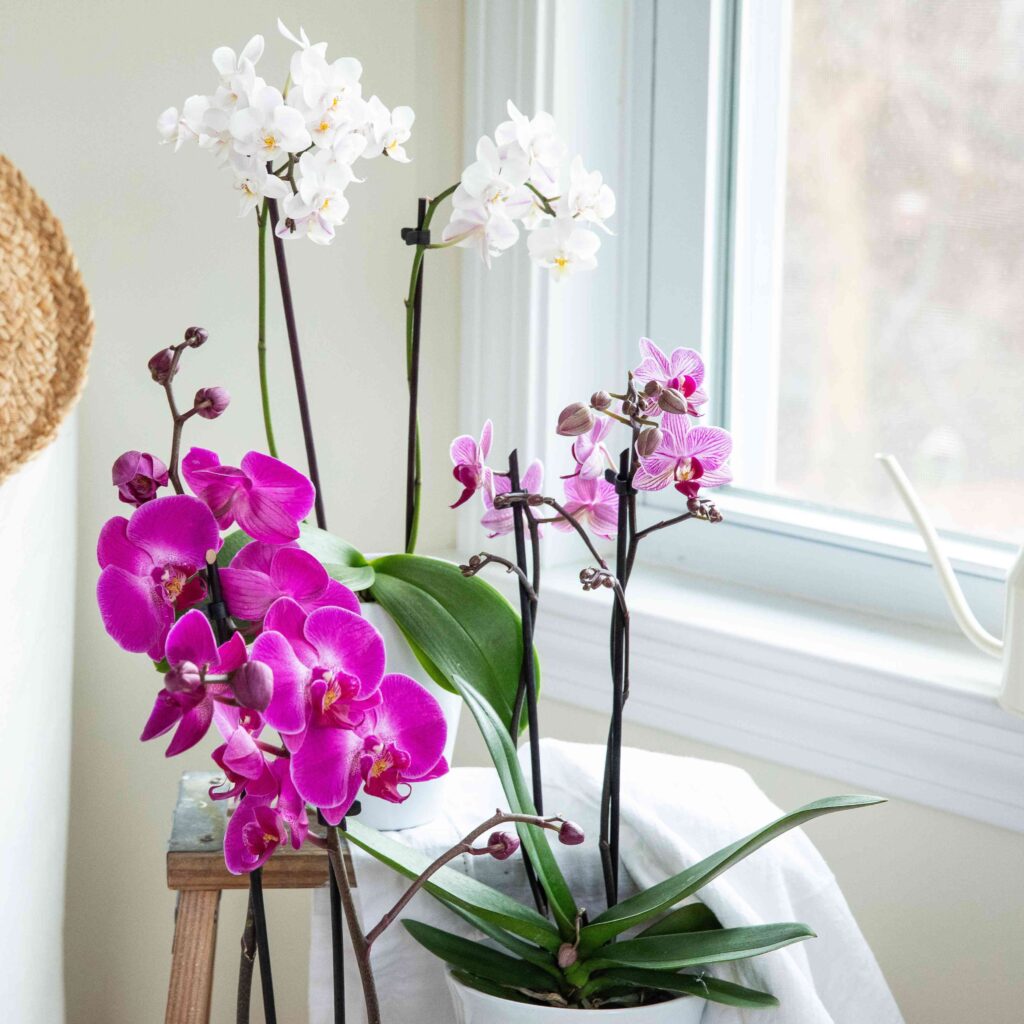
1. Overwatering
The most frequent cause of orchid death.
- Symptoms: Yellowing leaves, mushy roots, and leaf drop.
- Prevention: Allow medium to dry between waterings and use well-draining pots.
2. Underwatering
Though orchids are drought-tolerant, consistent neglect leads to shriveled leaves and stunted growth.
- Prevention: Check roots and medium regularly and adjust watering frequency during hot, dry spells.
3. Using Cold Water
Cold water shocks orchid roots.
- Prevention: Always use room-temperature water.
Do Orchids Like High Humidity?
Yes — most orchids prefer 50–70% humidity, which helps maintain root health between waterings. In dry indoor environments:
- Use a humidity tray.
- Group orchids together.
- Place near a humidifier.
Tip: Avoid misting directly into the crown or flowers to prevent fungal issues.
Conclusion
To summarize, most orchids need watering once a week during active growth and every 10–14 days in dormancy. However, watering frequency should always be guided by your orchid’s species, environment, potting medium, and condition of its roots and leaves.
By understanding your orchid’s unique preferences and adjusting care as needed, you can confidently keep these exquisite plants healthy, blooming, and thriving year after year.
Remember — when it comes to orchids, less is often more. Learn to read your plant’s signals, water wisely, and enjoy the rewarding beauty of a well-cared-for orchid collection.
